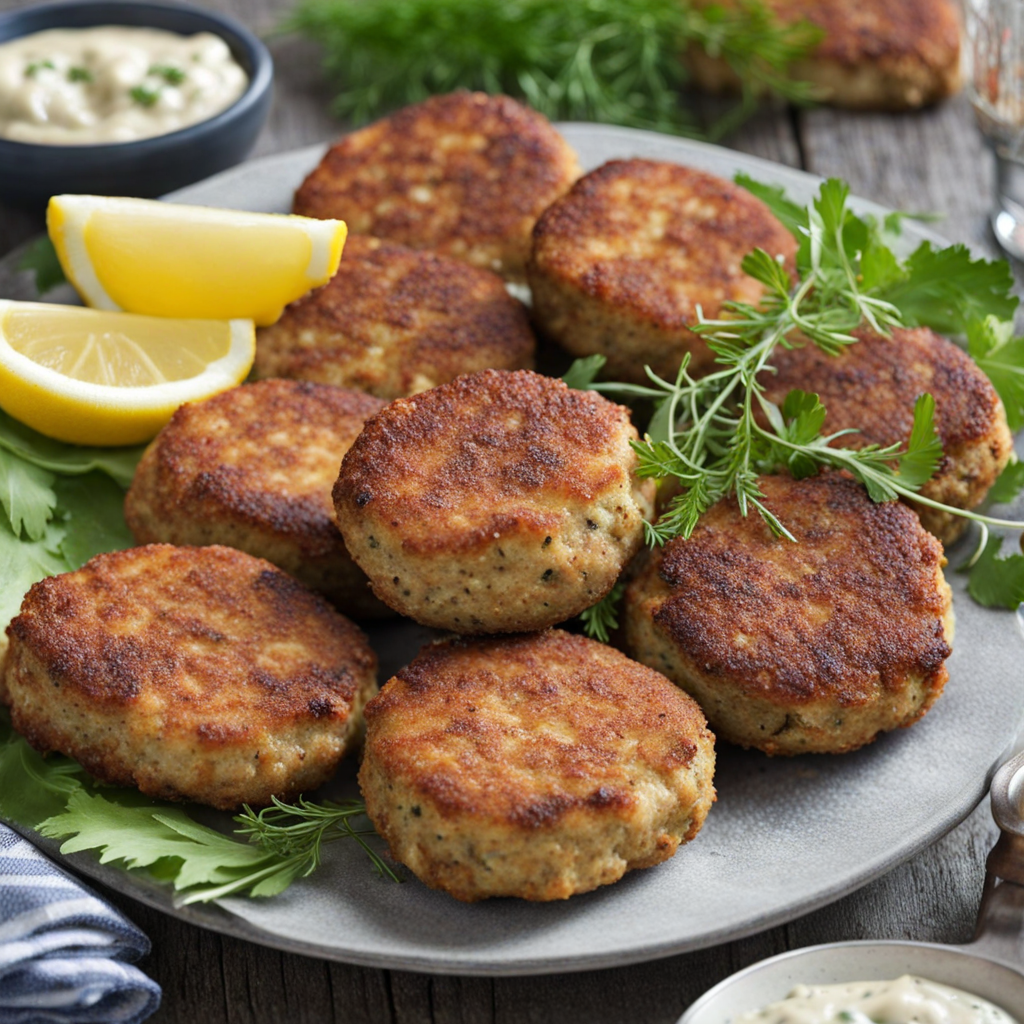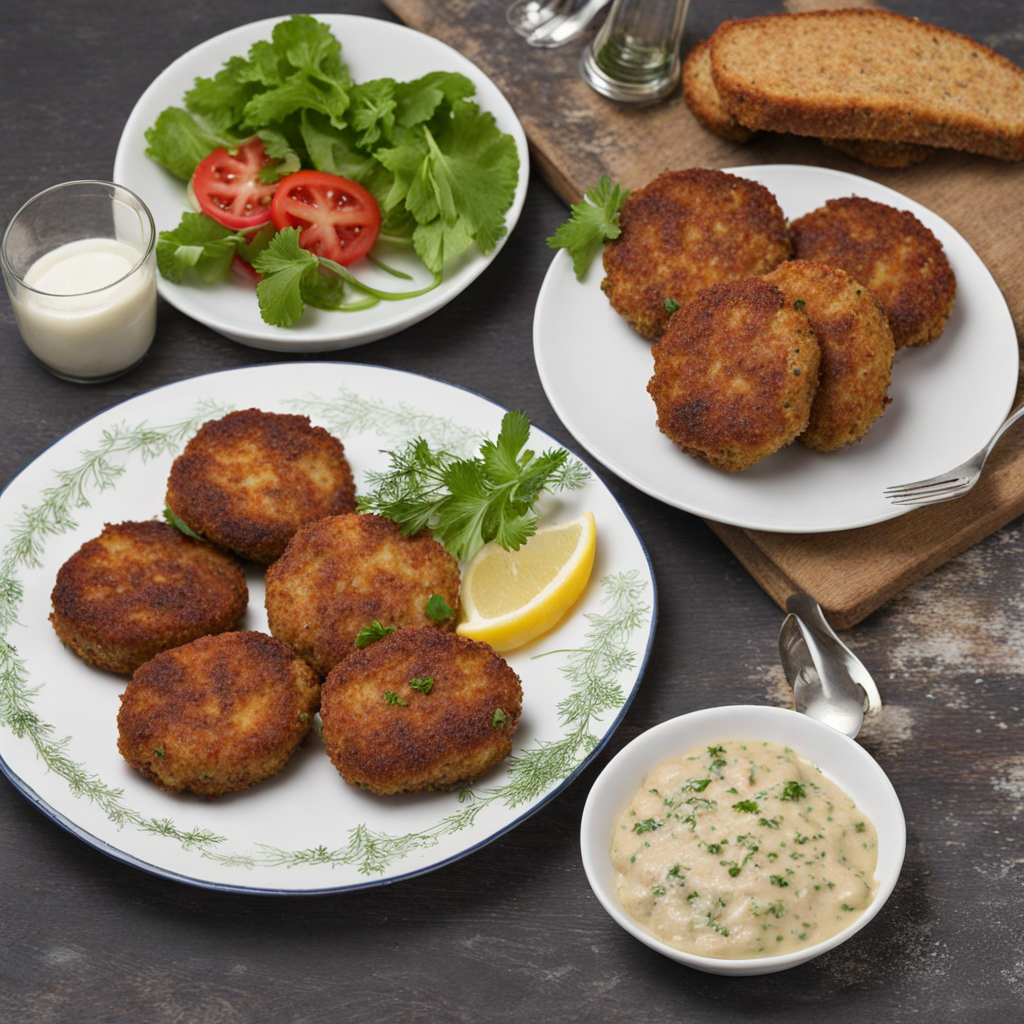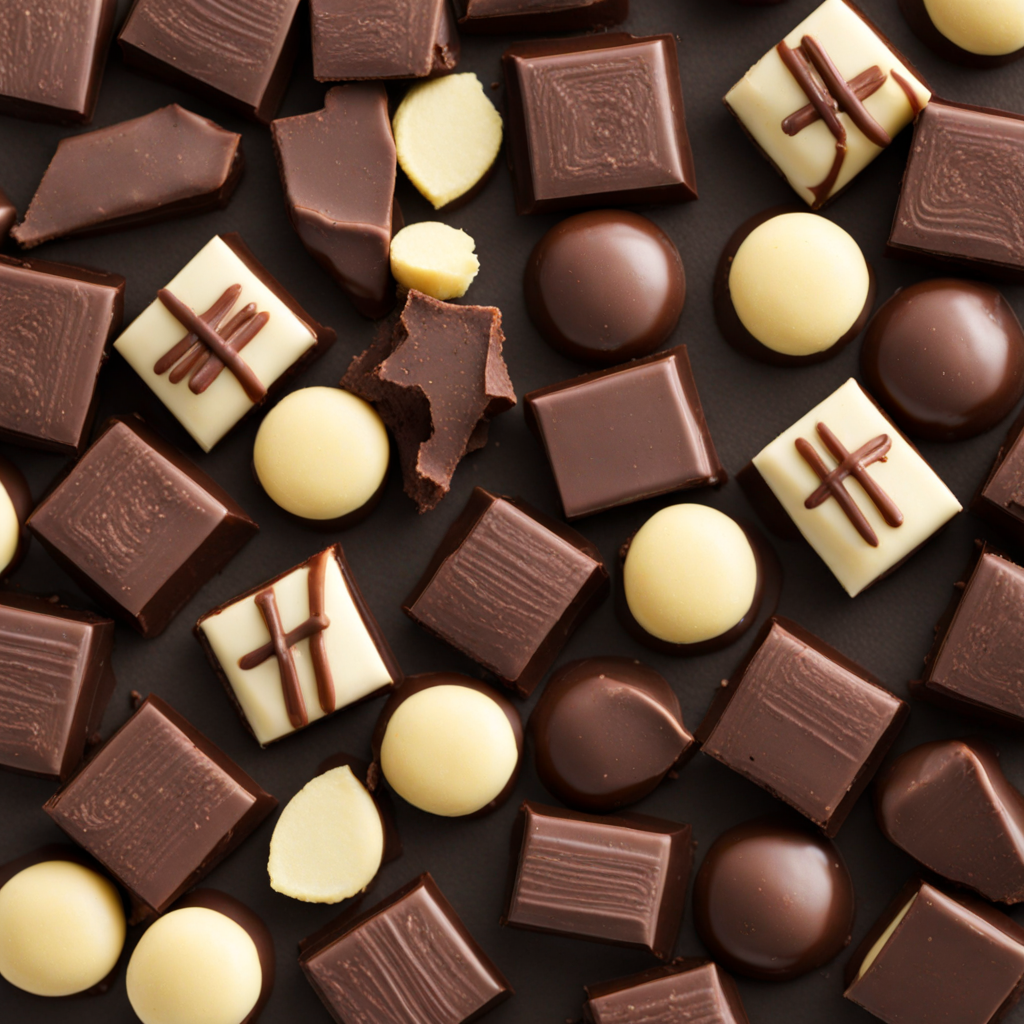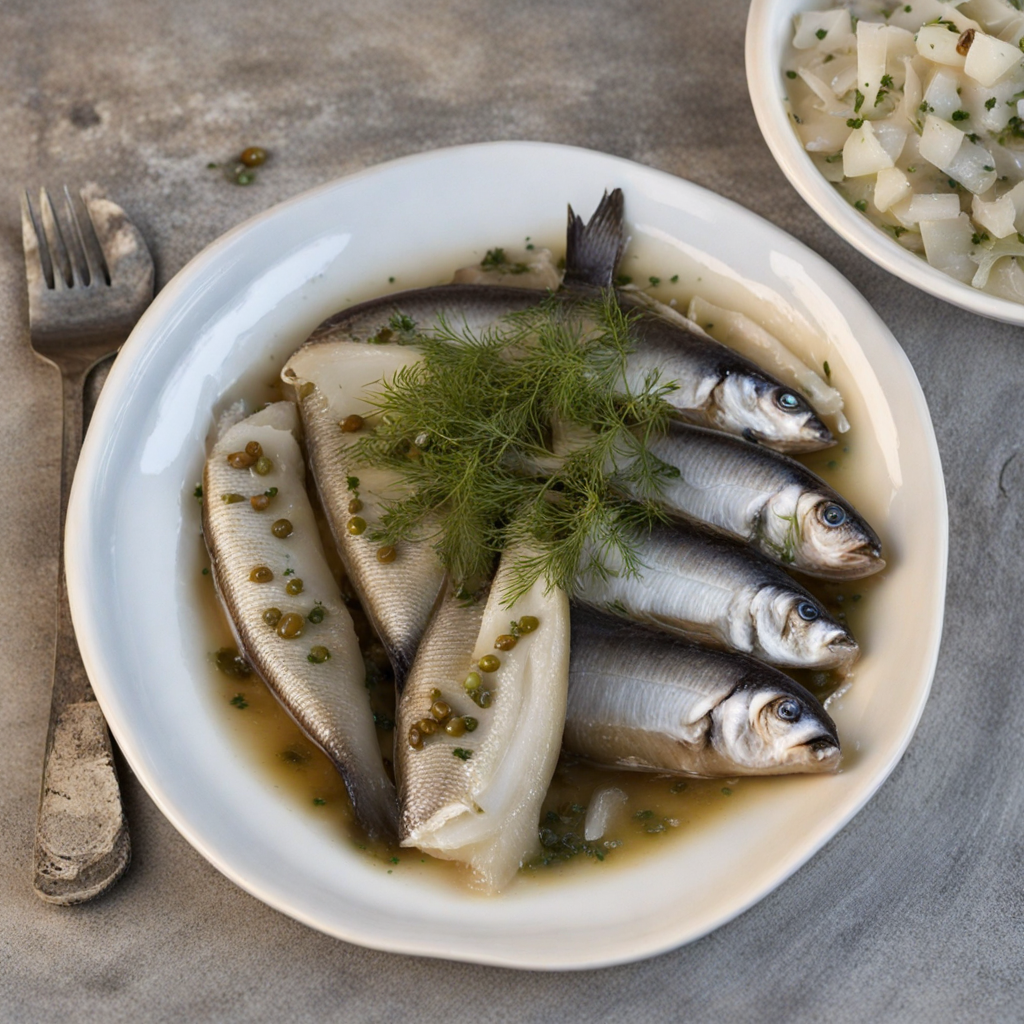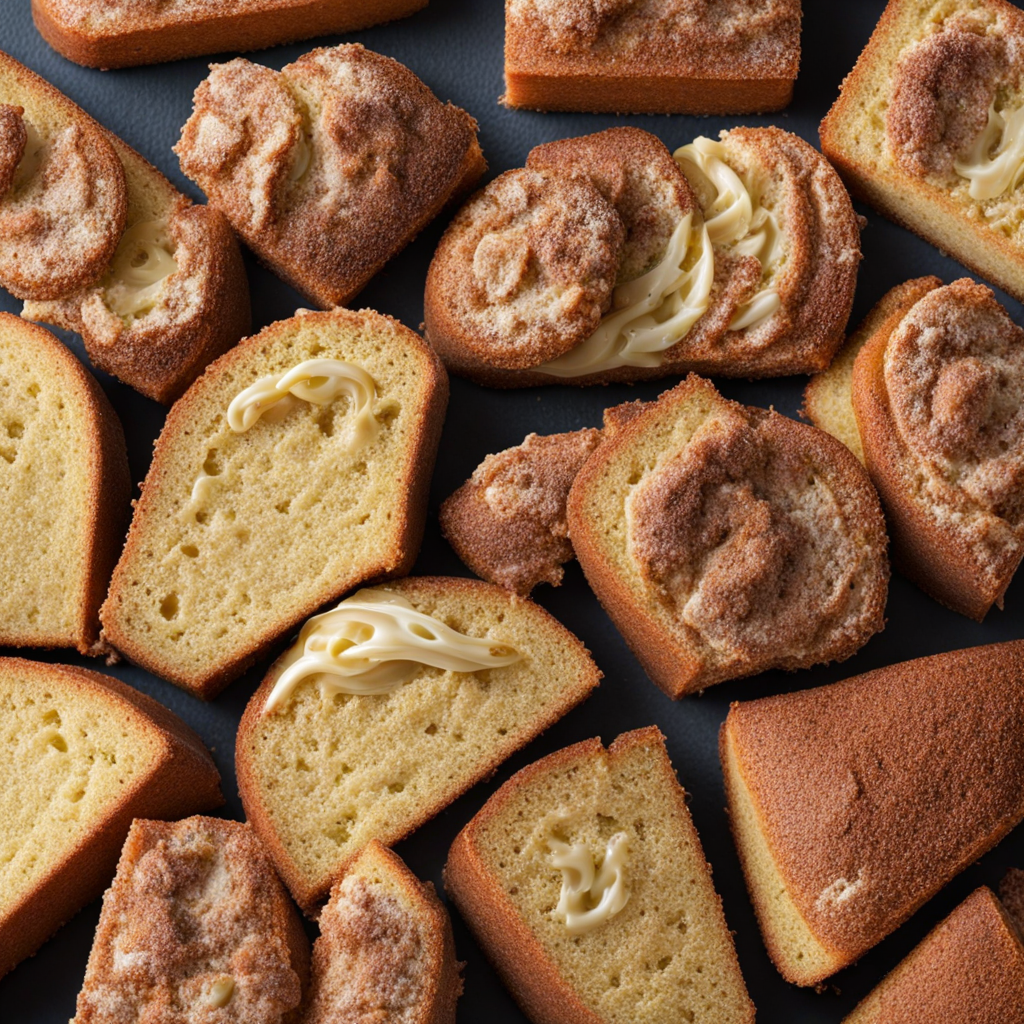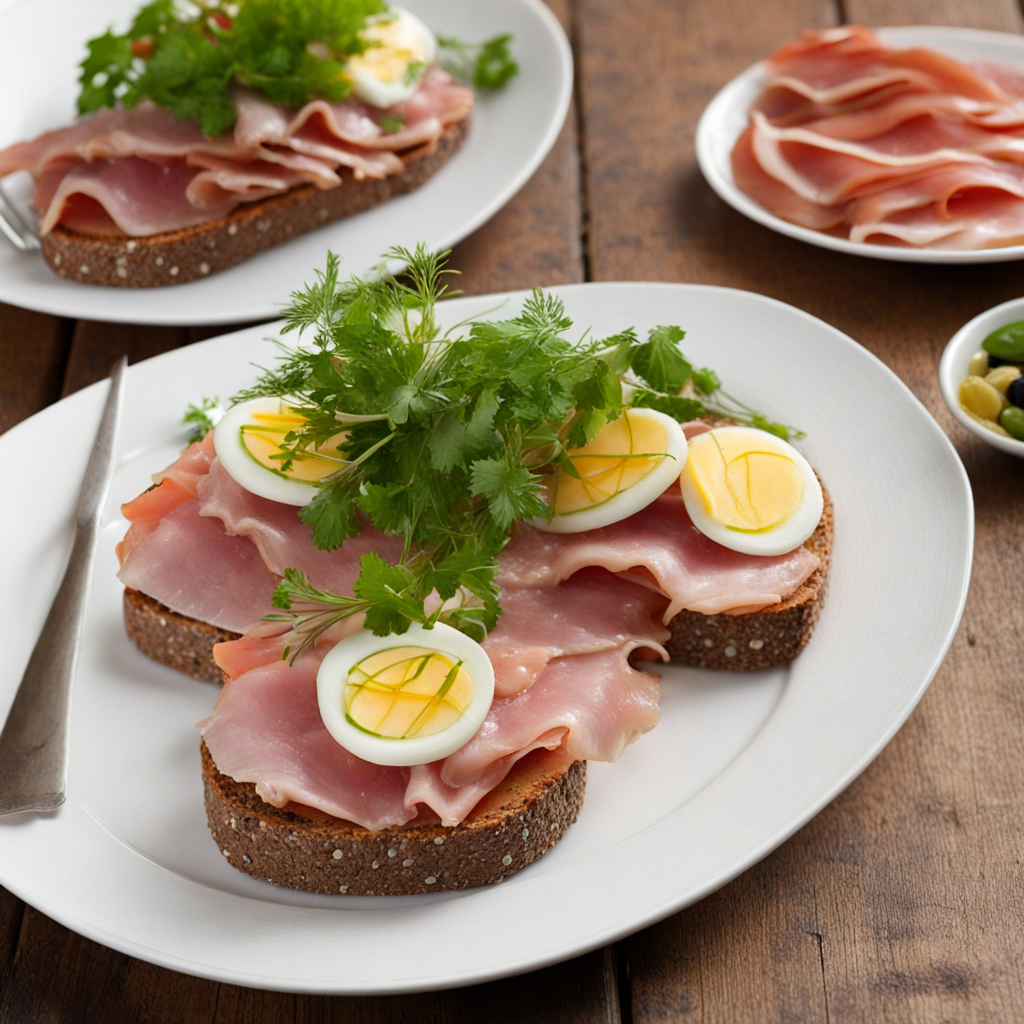Fiskefrikadeller
Fiskefrikadeller are a delightful Danish dish that showcases the fresh and vibrant flavors of the sea. These fish cakes are typically made from minced fish, often a combination of cod, haddock, or other white fish, mixed with onions, flour, and spices. The mixture is crafted into small patties and pan-fried to golden perfection, creating a crispy exterior that gives way to a tender and flavorful interior. The subtle seasoning allows the natural taste of the fish to shine through, making these cakes a beloved staple in Danish cuisine. Served hot, Fiskefrikadeller can be enjoyed in various ways. They are often accompanied by a side of remoulade, a tangy sauce made from mayonnaise, mustard, and chopped pickles, which complements the richness of the fish cakes beautifully. Additionally, they might be served alongside boiled potatoes and a light salad, creating a balanced meal that highlights the flavors of the sea while also offering a refreshing contrast. The dish can also be enjoyed cold, making it a versatile option for picnics or casual gatherings. What makes Fiskefrikadeller particularly appealing is not only their delicious taste but also the nostalgia they evoke for many Danes. These fish cakes are often a cherished family recipe, passed down through generations, and are frequently enjoyed during festive occasions or gatherings. The combination of simple ingredients and traditional cooking methods yields a dish that feels both comforting and celebratory, inviting anyone who tries it to experience a genuine taste of Danish culture.
How It Became This Dish
Fiskefrikadeller: A Delicious Dive into Danish Culinary Heritage Fiskefrikadeller, often translated as "fish cakes," is a beloved dish in Denmark and a quintessential element of Danish cuisine. These savory morsels, typically made from minced fish mixed with spices and flour, encapsulate the essence of the nation's maritime history and cultural identity. Understanding the origins, cultural significance, and evolution of Fiskefrikadeller provides a fascinating glimpse into the heart of Denmark's culinary traditions. Origins: A Maritime Legacy The roots of Fiskefrikadeller can be traced back to the Viking Age, when the Scandinavian peoples relied heavily on the bountiful waters surrounding their land for sustenance. Fish has long been a staple in the Danish diet, with cod, herring, and plaice frequently appearing on the menus of coastal communities. The Vikings were adept fishermen, and their techniques laid the foundation for centuries of fish preparation that followed. During the Middle Ages, fish became an even more significant part of the diet, particularly with the advent of Christianity, which mandated fasting on certain days. This led to a greater reliance on fish as a source of protein. The Danish coastline provided ample resources, and fish was often preserved through methods like salting and smoking, enabling its consumption year-round. Fiskefrikadeller likely emerged as a way to utilize leftover fish and to create a dish that could be easily prepared and served. The dish is believed to have gained prominence among the working class, who sought nutritious, affordable meals. Minced fish, combined with ingredients like flour, eggs, and herbs, created a versatile dish that could be made with local fish varieties and adjusted to individual tastes. Cultural Significance: A National Dish Fiskefrikadeller holds a special place in Danish culture, often regarded as a comfort food that evokes memories of home and family. Many Danes grow up enjoying these fish cakes, which are frequently served at family gatherings and festive occasions. The dish is seen as a bridge between generations, with recipes passed down through families, each with its own slight variations. In modern Denmark, Fiskefrikadeller is not only a staple in households but also a common offering in restaurants and cafes. It is often served with traditional accompaniments such as remoulade (a tangy mayonnaise-based sauce), lemon wedges, and a side of boiled potatoes or rye bread. This pairing reflects Denmark's emphasis on fresh, local ingredients and simple yet robust flavors. Fiskefrikadeller is also part of Denmark's broader culinary identity, which celebrates the country's fishing heritage. The dish exemplifies the Danish concept of "hygge," which emphasizes coziness, comfort, and the enjoyment of simple pleasures. Eating Fiskefrikadeller with loved ones embodies the spirit of togetherness that is central to Danish culture. Development Over Time: From Simple to Sophisticated As Danish cuisine evolved through the centuries, so too did the preparation of Fiskefrikadeller. The industrialization of the fishing industry in the 19th and 20th centuries brought about significant changes in how fish was processed and consumed. As fishing became more commercialized, the availability of different fish species increased, allowing for greater variety in Fiskefrikadeller recipes. In the 20th century, the culinary landscape of Denmark began to shift, influenced by globalization and the advent of modern cooking techniques. While traditional recipes remained popular, chefs began experimenting with ingredients and flavors, leading to a resurgence of interest in Nordic cuisine. This movement, often referred to as New Nordic Cuisine, emphasized local, seasonal ingredients and reimagined traditional dishes. Fiskefrikadeller saw a renaissance during this period, with chefs incorporating innovative flavors and presentation styles. Some began using alternative fish sources, such as salmon or mackerel, while others played with textures by adding ingredients like breadcrumbs or vegetables to the mix. This evolution reflected a broader trend in Denmark toward sustainability and a commitment to utilizing local resources. In recent years, the focus on healthy eating and dietary preferences has further influenced the preparation of Fiskefrikadeller. With an increasing number of people seeking gluten-free or low-carb options, alternative binders like almond flour or mashed potatoes have been introduced, appealing to a wider audience without sacrificing flavor or tradition. Fiskefrikadeller in Contemporary Denmark Today, Fiskefrikadeller remains a symbol of Danish culinary pride. The dish is featured in numerous cookbooks, cooking shows, and culinary festivals across the country. Many restaurants offer their unique interpretations, often highlighting the freshness of the fish and the creativity of the chef. Moreover, Fiskefrikadeller has found its way into global cuisine, with Danish restaurants and food trucks serving their version of the dish in cities around the world. As international interest in Nordic cuisine continues to grow, Fiskefrikadeller is becoming recognized as a dish that represents the rich maritime heritage of Denmark. In home kitchens, families continue to prepare Fiskefrikadeller, often using traditional recipes while adding their personal twist. The simplicity of the dish makes it accessible for novice cooks, while its versatility allows for experimentation and creativity. Conclusion: A Dish That Unites Fiskefrikadeller is more than just a fish cake; it is a reflection of Denmark's history, culture, and culinary evolution. From its origins in the Viking Age to its status as a modern comfort food, this dish encapsulates the connection between the Danish people and their maritime roots. As Denmark continues to embrace its culinary heritage while adapting to contemporary tastes and trends, Fiskefrikadeller stands as a testament to the enduring power of food to connect generations, celebrate traditions, and foster a sense of community. Whether enjoyed during a festive occasion or a simple family meal, Fiskefrikadeller remains a cherished part of Danish culture, inviting both locals and visitors to savor the flavors of Denmark’s storied past.
You may like
Discover local flavors from Denmark


